A system-on-a-chip (SoC) integrates digital, analogue and mixed signals, as well as RF functions into a single unit. It consumes less power, which makes it ideal for smartphones.
Lower the power consumed by a chipset, higher is its efficiency. To ensure this, chipset technology has now reached 10nm scale, where key SoC manufacturers such as Qualcomm, Spreadtrum, Mediatek, Apple, Huawei and Intel are competing to outdo each other in chip performance and capture markets worldwide.
However, 10nm is not the final limit. “It is predicted that 10nm technology will be used till the end of year 2017. Year 2019 will experience a new 7nm technology, while around 2022 5nm technology would be in the market,” says Jag Bolaria, principal analyst for embedded and servers at Linley Group.
Features embedded in SoCs
An SoC is equivalent to the motherboard of a computer system that comprises a GPU, CPU and memory on a single chip. It is a successful integration of multiple domains such as device, design and application. As far as the device is concerned, several transistors are embedded into one single chip. This allows the chip to perform a wide range of functions through a single unit (chip).
As the increasing number of transistors on the chip push its applications to a broader range, chip design is becoming complicated and challenging. The challenge could be related to the device, design or execution.
SoCs comprise internal components such as microcontrollers/microprocessors, memory blocks, oscillators and phase-locked loops (PLLs) for timing, counter-timers/real-time timers, external interfaces such as USB, Ethernet and FireWire, analogue interfaces, voltage regulators and power management circuits.
Evolution in SoC technology
Various manufacturers use different configurations inside their SoCs depending on the type of technology used. For instance, Nvidia Tegra 3 SoC, built using 40nm technology, has only a GPU, memory controller and video out streams. On the other hand, Qualcomm Snapdragon S4, fabricated using 28nm technology, has LTE, GPE and WiFi all integrated in a single chip.
Newer chipsets fabricated on 10nm technology act as a high-end platform for highly efficient systems. At the same time, there are a few manufacturers struggling to roll over to mid-level and low-level smartphone segments with fabrication above 10nm.
The extended memory-LPDDR2 to LPDDR4-also adds value to the product (smartphone). ARM’s big.Little architecture helps smartphone chipsets with battery-saving and powerful cores such as HiSilicon Kirin 960/950/920 and Samsung Exynos 8895.
For instance, when a smartphone user plays a game that requires a high clock speed, processing speed and memory, cores in the processor are divided into big and little cores. Now, load is assigned to each of the cores simultaneously, avoiding situations where the smartphone hangs or its battery dies.
Tables I and II show the number of cores, memory capacity and fabrication technology used in SoCs from various manufacturers. FinFET (Fin field-effect transistors) technology creates thin fin-like structures, which reduces energy consumption.
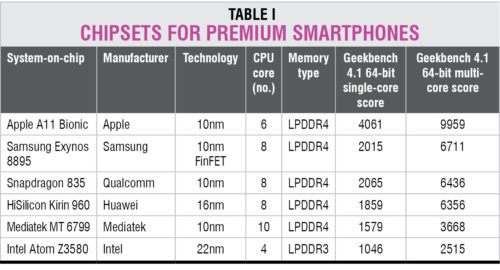
Chipsets listed in Table I are fabricated on 10nm scale and use advanced memory type (LPDDR4) and features that make them ideal for high-end smartphone devices.
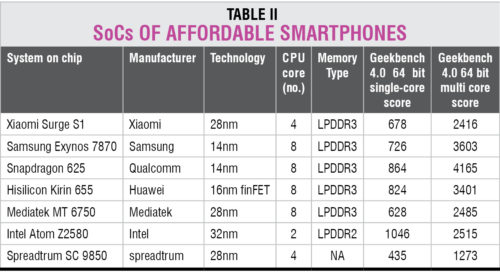
SoC classification as per specifications helps users to understand the SoCs’ significance and parameters. Moreover, smartphone manufacturers can compare the performance of the latest and running SoC models and decide to invest accordingly.
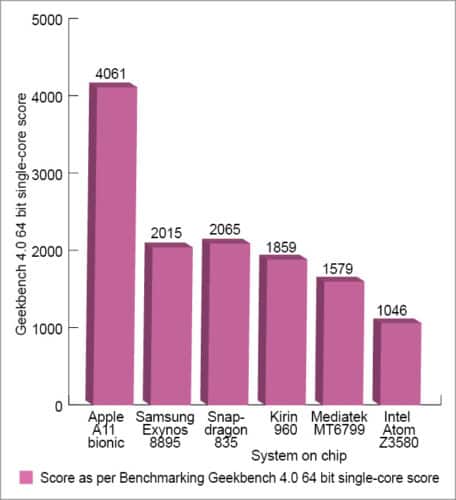
Fig. 1: Single-core CPU processing score for high-end SoCs of key players
Other than FinFET, new technology upgrades include Vulkan API and VoLTE technology. Some manufacturers have also started integrating artificial intelligence (AI) features into their chipsets. Kirin 970 chipset is an example.
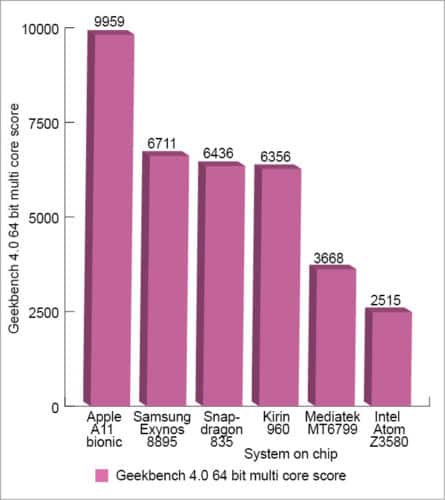
Fig. 2: Multi-core CPU processing score for high-end SoCs of key players
Upgrades in SoC technology
As consumers demand highly efficient devices, “there are a few technology upgrades in chip fabrication to improve thermal management and smartphones’ download speed for multimedia applications. Extra features embedded include artificial intelligence/camera connectivity and support for WiFi and Voice-over-LTE (VoLTE) application requirements,” says Neeraj Sharma, head of Spreadtrum Communications.
Steve Roddy, senior group director with Cadence Design System, shares that smartphones are going to cover a lot more dimensions than just taking selfies. Now, SoC applications can vary from the Internet of Things (IoT) to drones and security cameras.
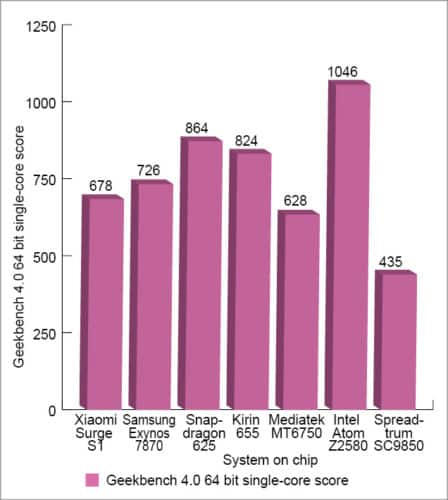
Fig. 3: Single-core CPU processing score for low-end SoCs
Efficient power management
Smartphone manufacturers target features like high-speed RAM, high-speed processor and multicore processor to offer a customer advantage. As the evolving multimedia services require high-speed data, power optimisation with features such as upgraded RAM, processor speed and multi-core CPUs is important.
Gated bus is a low-power-consumption technology used in SoCs. FinFET technology is being used by most SoC manufacturers. Qualcomm’s Snapdragon 835 uses 10nm technology with FinFET process node. More the fabrication nodes are shrinked, faster the system-on-chip operates and lesser is the power required. The amount of voltage is also lowered due to thinner fabrication node, which has helped in reducing leakage in the chip due to planar processes by up to 50 per cent.
FinFET technology not only cuts down the power consumption but it also enhances the performance. For instance, Qualcomm has been able to reduce the size of Snapdragon 835 by 35 per cent. The chip is also claimed to use 25 per cent less power than previous releases. Thus, the market for low-power-consumption technology is taking a step forward as it impacts the battery life and download speeds too.
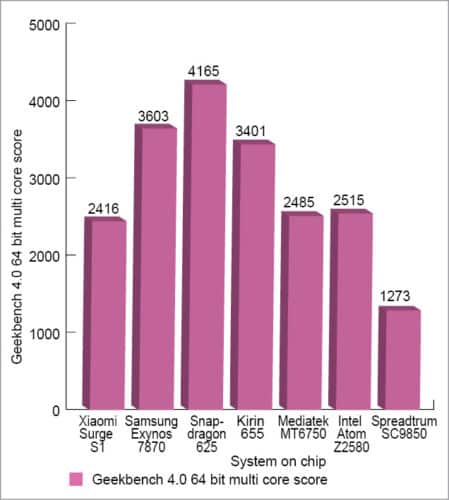
Fig. 4: Multi-core CPU processing score for low-end SoCs
Peak download and upload speed
Huawei’s Kirin 970 SoC released lately features the maximum download speed (up to 1.2Gbps), while Xiaomi Surge S1 has the minimum speed (150Mbps).
Vulkan API
Vulkan is one of the most important features for high-performance 3D graphics applications-for example, video games and interactive platforms. It is a low-level API that supports parallel tasking, thus reducing the CPU usage. Xiaomi Surge S1, Spreadtrum 9853 and Snapdragon 835 are amongst recently released chipsets that use Vulkan technology. Snapdragon 835 supports Vulkan also to increase multi-core CPU utilisation.
VoLTE technology
VoLTE standard for mobile communication supports higher data capacity than 3G UMTS or 2G GSM. It assists in releasing the bandwidth as the packets are smaller in size and optimised. The iPhone 6s series and beyond, Microsoft Lumia 950 XL, OnePlus 5, OnePlus 3/3T and many more smartphones use the VoLTE technique.
Other than VoLTE and Vulkan, chipset manufacturers are also including MEMS and VoWIFI.
Fig. 5: LTE core network (Source: www.openet.com)
Challenges
The process of developing a compact solution increases the time to market as efforts to integrate multiple functions in a single IC increases the time to design and develop. The more the time taken, the less would be the shelf-life of the component.
Besides, there is the SoC design challenge of cross-domain optimisation as many design complexities remain intact with IP reuse.
After 10nm fabrication technology, manufacturers are now targeting 7nm. GlobalFoundries plans to launch 7nm in three stages of lithography, namely, Gen1, Gen 2 and Gen3, which are likely to complete by 2020.
7nm technology is claimed to reduce power consumption by 60 per cent and improve performance by 40 per cent. But its practical implementation is a complex task, which requires refined design techniques. The time-taking process of chip fabrication usually leads to lowering of the SoC’s shelf-life.
Market analysis
The SoC market was worth $45.89 billion in the year 2016. It is expected to grow annually at a rate of 8.4 per cent from 2017 to 2025, reaching the size of $89.03 billion.
The three leading SoC manufacturers together account for 68 per cent of the global market, with Qualcomm alone accounting for around 38 per cent.
Besides, India is believed to be the fastest growing market due to surge in electronics device sales, which have helped to propel technologies such as 3G, 4G and LTE. Experts predict a growth of 25 per cent during 2015-22.







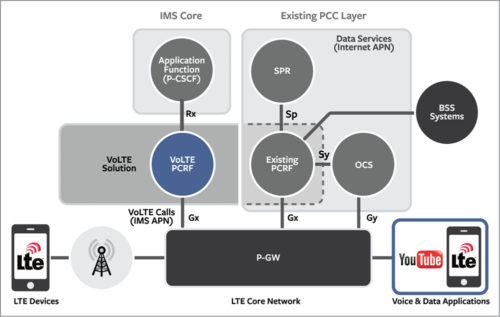

Thanks for your arcticle
You are most welcome.